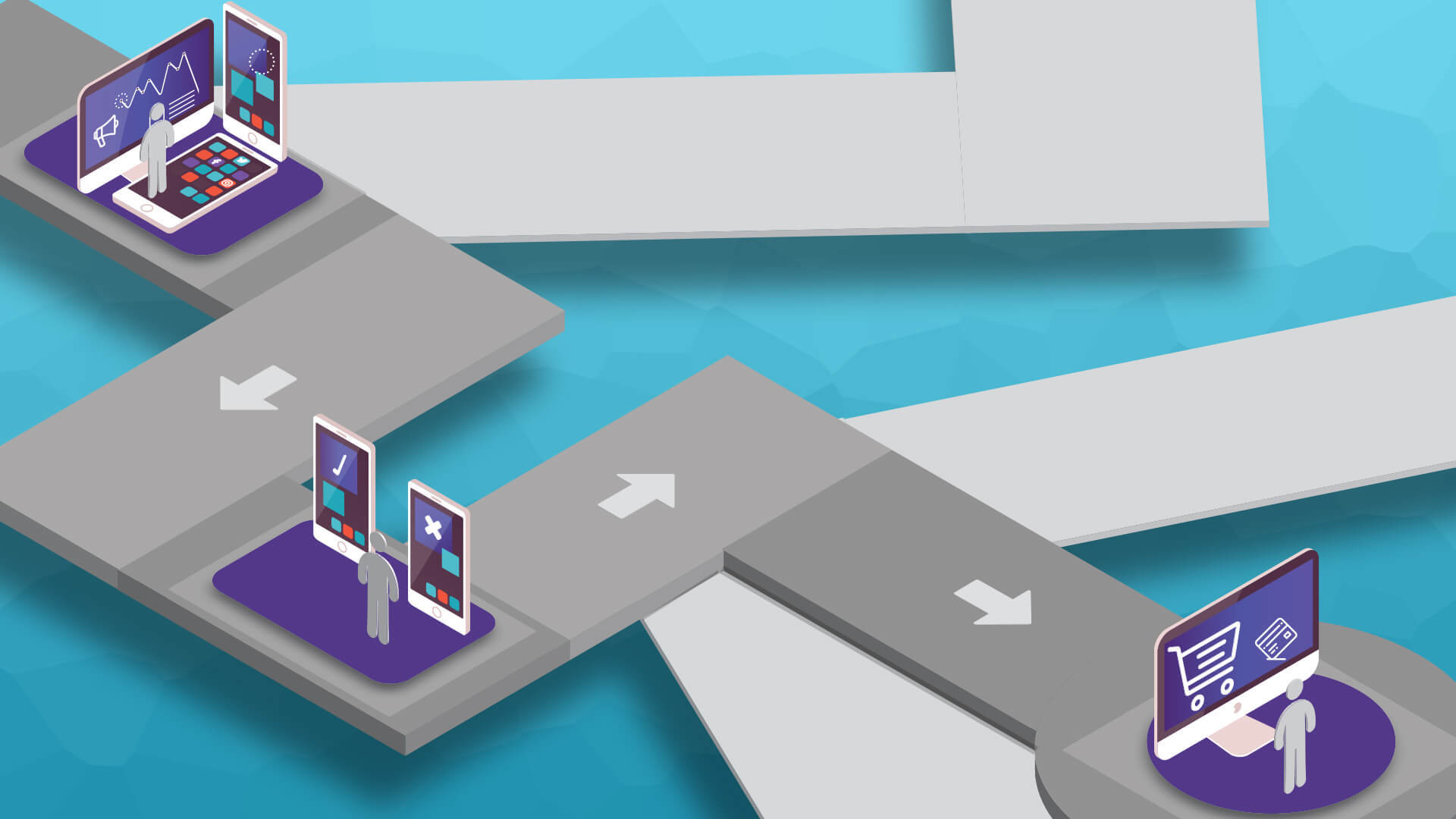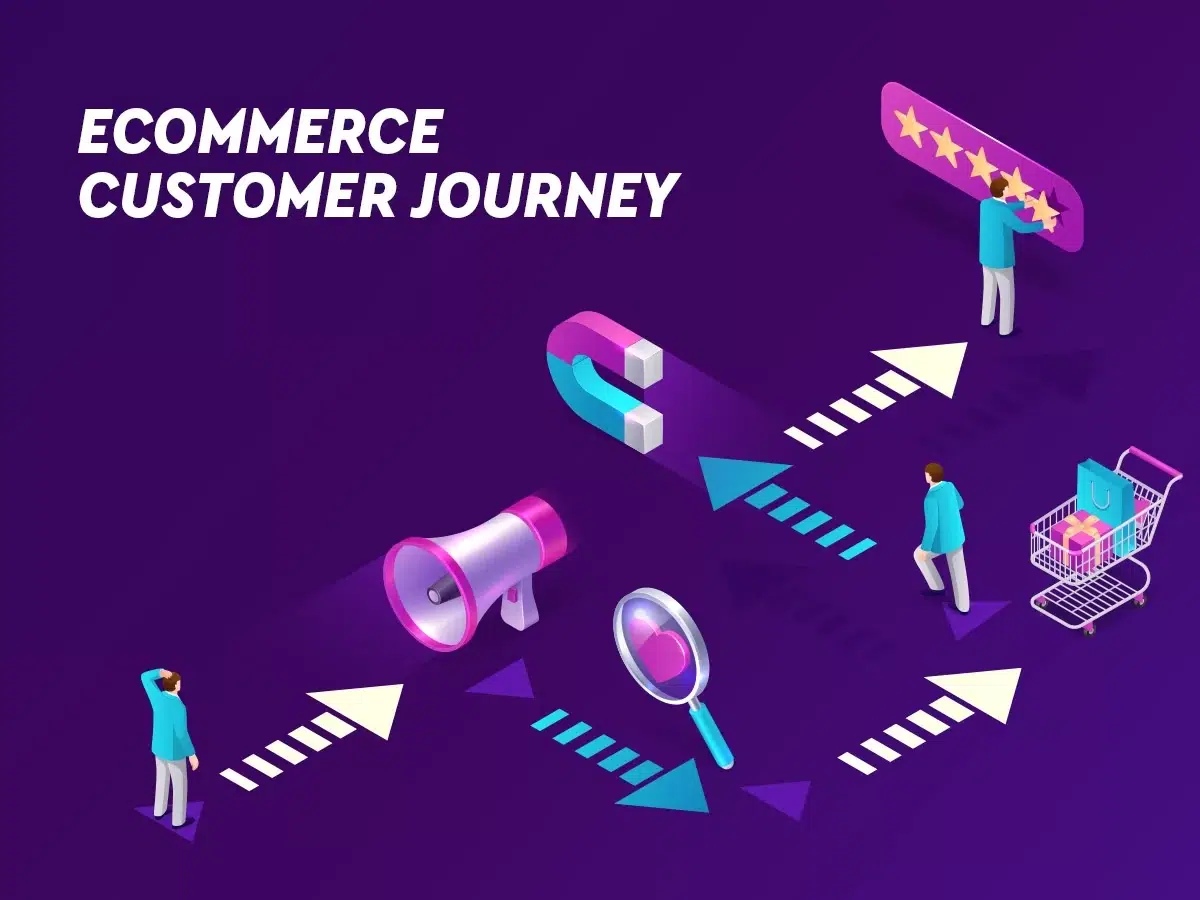Imagine a customer browsing social media, then seamlessly clicking on an ad and landing on your beautifully designed website. They explore product pages, read reviews, and ultimately add a few items to their cart. But wait! A cumbersome checkout process frustrates them, and they abandon their cart. This scenario highlights the importance of understanding the ecommerce customer journey – the path a customer takes from initial brand awareness to purchase and beyond. By optimizing each stage of this journey, you can turn website visitors into loyal customers and fuel your ecommerce success.

Key Stages of the Ecommerce Customer Journey
The ecommerce customer journey can be broken down into five key stages:1. Awareness:
This is where potential customers first discover your brand and products. This could happen through various channels like social media ads, search engine results, influencer marketing, or even offline marketing efforts. Here, the goal is to capture their attention and spark interest in your offerings.2. Consideration:
Once aware, customers enter the research phase. They visit your website, browse product pages, read descriptions and reviews, and compare your offerings to competitors. This is where you need to convince them why your products are the best fit for their needs. High-quality product content, informative descriptions, clear visuals, and user-generated content like reviews all play a crucial role in building trust and establishing your brand as a reliable source. Additionally, a user-friendly website navigation and a robust search function are essential for ensuring a smooth browsing experience and helping customers find what they’re looking for quickly.3. Decision:
Now, customers are seriously considering buying. Factors like pricing, trust signals (e.g., secure payment gateways, customer testimonials), and clear return policies play a crucial role in influencing their purchase decision. Transparency in pricing and clear communication regarding shipping costs and return policies are key to building trust and eliminating purchase hesitancy. Additionally, displaying trust signals like security badges, customer testimonials, and secure payment gateways reassures customers that their information is safe and the transaction is legitimate.4. Purchase:
This stage focuses on the actual buying experience. A smooth checkout process with multiple payment options, clear order confirmation, and timely shipping information are essential for conversion. Here, streamlining the checkout process is paramount. Offering guest checkout options, allowing customers to save their information for future purchases, and providing multiple payment methods (including popular digital wallets) can significantly reduce cart abandonment rates. Security and clear communication are also crucial – ensure you provide secure payment gateways and that customers receive clear order confirmation emails with shipment tracking information.5. Post-Purchase:
The journey doesn’t end after the sale. Exceptional customer service, personalized recommendations, and loyalty programs can turn first-time buyers into repeat customers who advocate for your brand. By implementing automated email campaigns, you can keep customers informed about order confirmation, shipping updates, and provide personalized product recommendations based on their purchase history and browsing behavior. Excellent customer service is essential for addressing inquiries and resolving issues promptly and professionally, fostering positive brand perception. Finally, rewarding repeat customers with loyalty programs that offer exclusive discounts, early access to sales, and other benefits incentivizes repeat business and builds customer loyalty.Actionable Tips for Ecommerce Success
We’ve explored the key stages of the ecommerce customer journey. Now, let’s delve into actionable tips for optimizing each stage:- Awareness Stage:
- SEO: Implement strong SEO practices to ensure your website ranks high in search engine results for relevant keywords.
- Social Media Marketing: Leverage social media platforms to reach new audiences and showcase your products. Consider collaborating with relevant influencers to boost brand awareness.
- Consideration Stage:
- Product Content: Create high-quality product descriptions that are informative and engaging. Include detailed specifications, clear images from multiple angles, and user-generated content like customer reviews.
- Website Navigation: Ensure your website has a user-friendly navigation system and a robust search function to help customers find what they’re looking for quickly.
- Decision Stage:
- Pricing and Transparency: Be upfront about pricing and offer clear information about shipping costs and return policies.
- Trust Signals: Display trust signals like security badges, customer testimonials, and secure payment gateways to build trust and confidence in your brand.

- Purchase Stage:
- Streamlined Checkout: Offer a streamlined checkout process with guest checkout options, multiple payment methods (including popular wallets), and clear instructions.
- Security and Confirmation: Provide secure payment gateways and ensure customers receive clear order confirmation and shipping information.
- Post-Purchase Stage:
- Automated Emails: Implement automated email campaigns to keep customers informed about order confirmation, shipping updates, and personalized product recommendations based on their purchase history and browsing behavior.
- Customer Service: Provide excellent customer service to address inquiries and resolve issues promptly and professionally. A positive customer service experience fosters brand loyalty and encourages repeat business.
- Loyalty Programs: Reward repeat customers with loyalty programs that offer exclusive discounts, early access to sales, and other benefits. This incentivizes repeat purchases and strengthens customer relationships.
Advanced Strategies for Enhancing the Customer Journey
While optimizing the core stages is crucial, ecommerce businesses can elevate the customer journey by incorporating advanced strategies:- Personalization: Leverage customer data to personalize the shopping experience. This could involve recommending products based on browsing history, offering targeted discounts, or creating personalized marketing campaigns.
- Content Marketing: Develop valuable content (e.g., blog posts, how-to guides) that educates and engages potential customers, establishing your brand as a thought leader in your industry.
- Retargeting: Utilize retargeting ads to reach website visitors who haven’t converted yet. Retargeting allows you to display relevant ads across different platforms, reminding them of your products and enticing them to come back and complete their purchase.
- Mobile Optimization: Ensure your website and online store are optimized for mobile devices. In today’s mobile-first world, a seamless mobile experience is critical for capturing sales on the go.
- Chatbots and Live Chat: Implement chatbots or live chat features to provide real-time customer support and answer questions promptly. This enhances customer engagement and builds trust.






